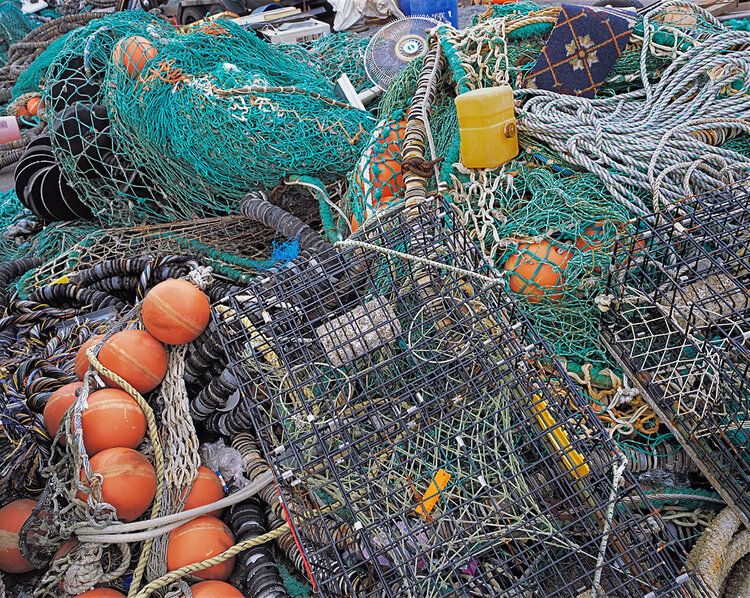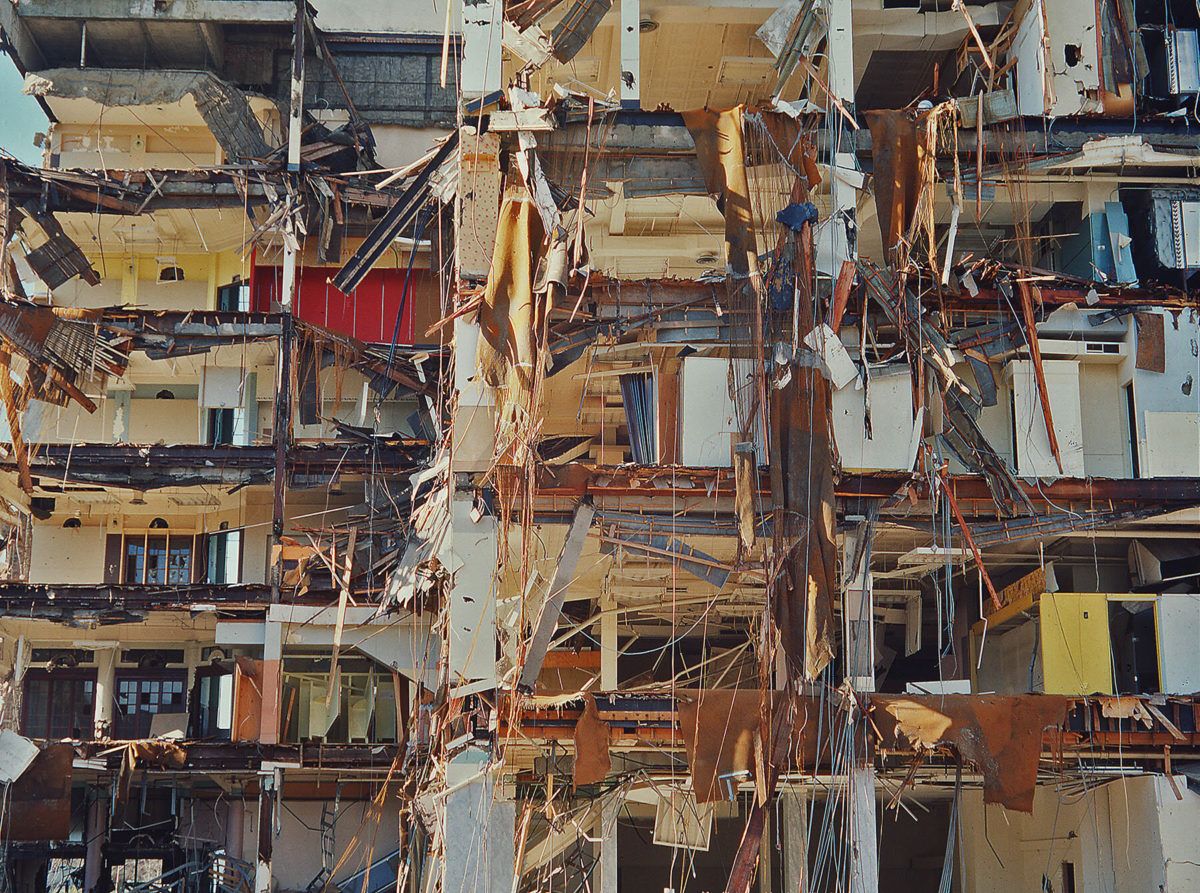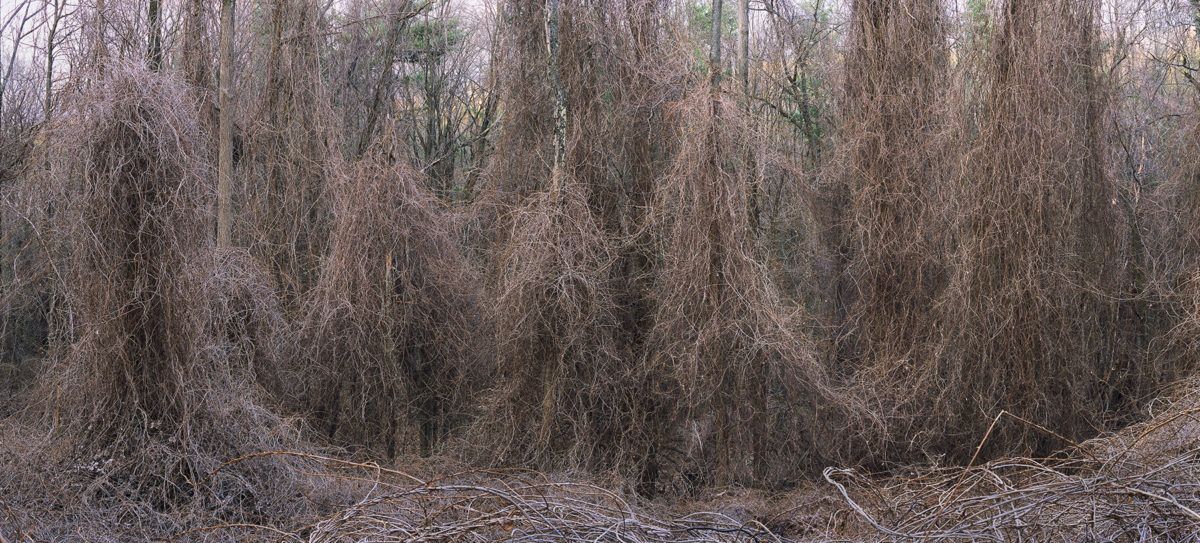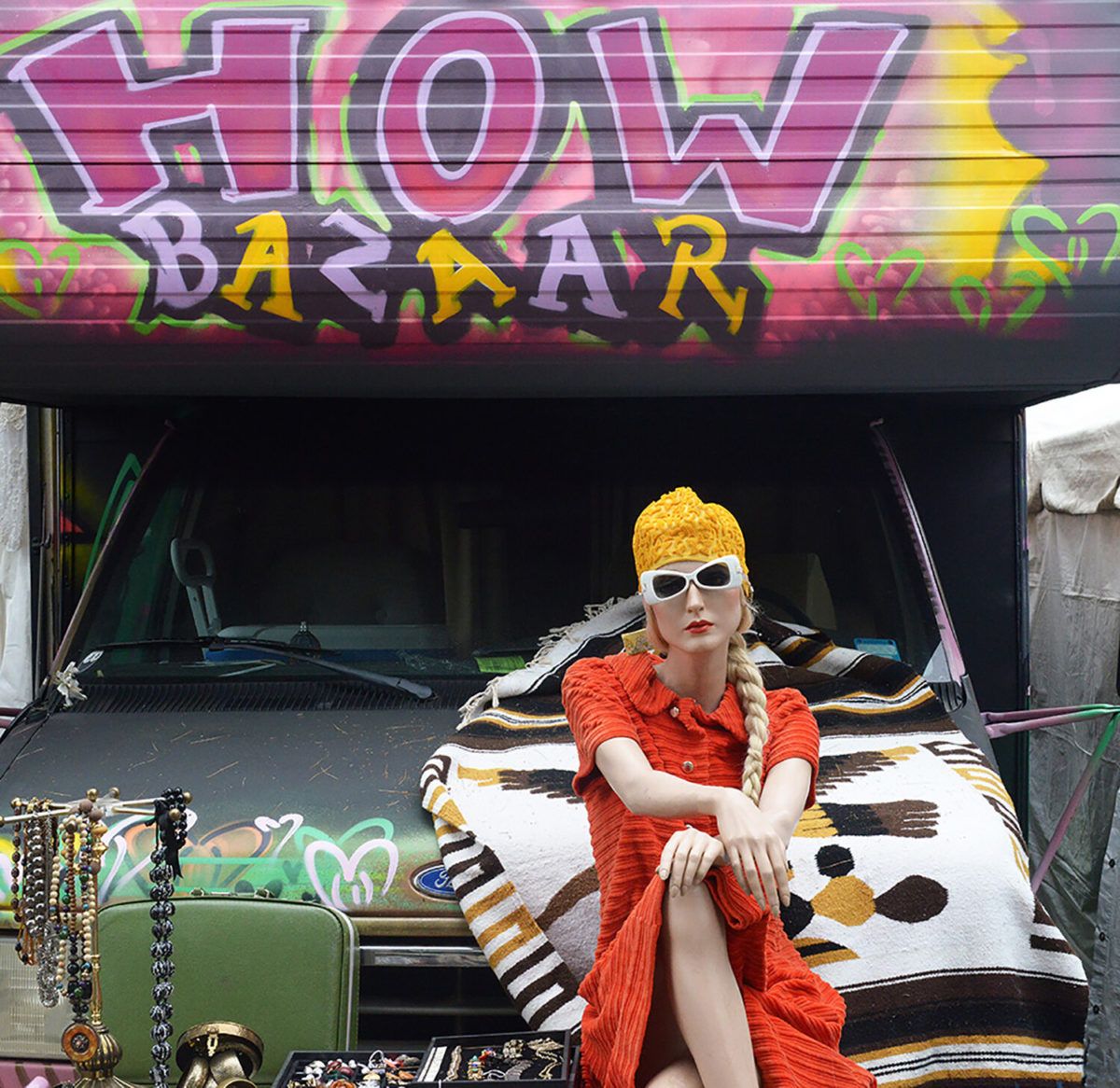blog
Interview with photographer David Ricci

Bravo from Edge of Chaos © David Ricci
David Ricci is a Massachusetts based photographer whose work is featured in Issue #112 – Amusement. Ricci has exhibited widely including solo exhibitions at the Fogg Museum at Harvard, Art Complex Museum, Berkshire Museum, Iris Gallery, Panopticon Gallery, UMASS-Amherst and Brown University and group exhibitions at the DeCordova, Danforth and Fleming Museums and at Rosenberg+Kaufman Gallery in New York City.
He was the recipient of the Annual Curator’s Award given from The Center for Photographic Arts in California and was longlisted for the 2014 Aesthetica Prize in the UK.
Ricci’s work is in several museum collections including the Los Angeles County Museum of Art, Fogg Museum, Noyes Museum, Winnipeg Art Gallery, The Hyde Collection, and the Smith College Museum of Art. His monograph, EDGE, will be published by Fall Line Press in Spring, 2022.
Cary Benbow (CB): I read that you are a self-taught photographer – Why did you become a photographer and/or what was your start into photography?
David Ricci (DR): As a teenager I liked to draw but was horrible at it! I was much better at math and science and went to Rensselaer Polytechnic Institute (RPI) to study biomedical engineering. At the very end of graduate school, I came across a group exhibition of the school’s camera club. No specific images from that show come to mind, but that is where this medium, in which one “draws with light,” first piqued my interest – here was a visual art form that did not require much manual dexterity. A year later I had saved enough money to buy my first camera, a 35mm Nikon, and became totally obsessed with taking photographs, developing film, and making prints. Being self-taught, I think I must have made every mistake known in the world of photography both in and out of the darkroom, but in retrospect I am glad to have blazed my own path.
CB: Why do you photograph? What compels you to make the images you create?
DR: Not to sound glib, but really, it’s just what I do. Beyond that it’s really difficult to say what compels me. Although I have been making photographs for decades, I love making new work now more than ever before.
CB: In the larger context of your work from the past 30+ years – What inspires your art? What kind of stories do you wish to tell?
DR: It has changed over time, but many of my projects include images that have a human element embedded in them, despite (or because of) the lack of people in the scenes. We know, for example, that someone laid a tarp on the ground, tossed some tools aside, or tied a boat to a dock, but those people are gone. Human presence without humans present. I am also fascinated by the role that randomness and chance plays in our lives. I believe there is an underlying rhythmic pulse in the universe which, at particular places and times, is manifested visually in spaces where order and chaos reach a taut balance. I look for those situations and views where a complex image, teetering at the edge of chaos, emerges from the scene.

Barriers from Edge of Chaos © David Ricci
CB: What do you wish the readers take away from your work presented here in the context of ‘Amusement’?
DR: These venues are designed to lure people in, to have fun, to be amused. My fun begins when the people are gone so I can document the artificial environment of the amusement parks and/or play with repeating lines, colors, shapes, and forms to make a photograph that sustains the viewer’s interest.
CB: Can you please explain the idea behind your images submitted to this issue? How do they relate to your other projects, or how are they significantly different?
DR: Early in my career I photographed architectural subjects and worked in a sparse formalist vein, trying to perfect what I understood to be “good” composition – move in close, crop tightly, eliminate superfluous objects from the field of view. The photographs had a geometric underpinning to them and were relatively simple compositionally. The sports courts and amusement parks provided ideal subject matter to continue down that path, but my attention soon turned to the kitschy amusement park environments when they were in transition or nearly deserted. When the parks were being erected or dismantled for the season, or when the sites were mostly abandoned, the landscape revealed a surreal quality that I found intriguing.
As the project evolved, I stood back to capture the scenes, including more physical space and content in the viewfinder. This forced me to more compositional elements, which gradually progressed over time to the point where I nearly overloaded the frame.
Since that time I have produced several more bodies of work utilizing a variety of compositional strategies to create photographs that reveal the essence of the subject while resonating with gesture, pattern and rhythm: a project on loss and devastation that includes photographs of building demolitions, dismantled factories and natural disasters; images of scrap metal heaps and recycling centers that comment on our consumerist society; a portfolio of large-scale prints of brush, branches and seaweed that make a purely formalist statement; a recent project photographing commercial fishing vessels and riggings that, despite the absence of the crew, evokes their presence and life on the working waterfront. Selections from all those projects are included in my monograph, EDGE.

Pier Chaos from Edge of Chaos © David Ricci

Departure from Edge of Chaos © David Ricci
CB: What/who are your photography inspirations – and why? Who/what had the biggest impact on your career, or left a lasting impression?
DR: Well, so many photographers come to mind, it would be hard to list them all, but I guess in general I can point to the ones associated with “ New Topographics” like Lewis Baltz and Robert Adams and the “New Color Photographers” who came into prominence in the 1980s – Eggleston, Shore, Meyerowitz, Levitt, and others who really opened my eyes to the possibilities for color photography. Twentieth century painters and sculptors also inform my approach to composition and mapping 3-dimensional space onto the 2-dimensional plane.
Career-wise, several people come to mind who gave me solo exhibitions at galleries and museums, or acquired prints, but, though he was probably never aware of it, words of encouragement from someone I met early in my career has meant just as much if not more to me. In the mid-90s I brought a portfolio of 20×24 Cibachrome prints of the work being shown in F-stop Magazine to Will Stapp, the senior curator at George Eastman House. Will spent a lot of time carefully looking at each print, discussing my work, and how it fit into the history of the medium and current trends. After looking at several prints he asked “where did you study?” My heart dropped, thinking that he would be disappointed to learn that I had no training. When I told him I was self-taught he responded with “I knew that” but, rather than it being a disappointment he went on to explain that he was thrilled. He explained that he had seen so many portfolios that he could usually tell where a photographer had studied but was not able to place my work. He told me I had a personal way of looking at the world. At that point in my career I felt very insecure about not having gone to art school or, for that matter, ever having attended a photography or art class, so his comments were very heartening. Part of me regrets not having a formal education in photography, and that path certainly makes sense for many photographers, but we all follow our own paths.
CB: Since photographers like Shore, Eggleston and Meyerowitz have qualities you admire — how do they ‘inform’ your own creative process? Have you used them as a springboard to inform your own work, or a departure point to discern your work as being unique to your vision and ideas?
DR: Around the time I came across Shore and Eggleston’s work, I was also spending a lot of time poring through art history books, books on the history of photography and attending exhibitions. While my motivation to go to places like MoMA was primarily to see photographs, I always spent a lot of time looking at modern and contemporary paintings – Cezanne, Bonnard, Mondrian, Estes, Pollock, Basquiat – which often held my interest longer than the photographs. This inspired me to try to make photographs, that, like the paintings I came to love, would hold the viewer’s interest, reveal themselves over time, and reward repeated viewings. I intentionally set out to expand on the compositional strategies of the New Color photographers by trying to make greater use of visual motifs and nuances and visually integrating objects close to and far from my camera. I shoot found (as opposed to constructed or posed) scenes and though I worked hard at it, I discovered that the world just did not fall into place that often. I spent the next two years or so making unsuccessful photographs!
It wasn’t until I started shooting the recreational sites that that I was able to get things to click into place and feel that I was successfully blending form and content.

Secret Village from Edge of Chaos © David Ricci
CB: Do you see your work as documenting your experience/environments, or commenting on them?, and what is your intent for the viewer?
DR: Both. I shoot scenes as I find them, so the photographs certainly document the environment, but with this series and other projects that followed, there is no getting away from the commentary. I choose where to position the camera, the objects to include (or omit) to get my point across. Your question makes me think back to John Szarkowski’s book Mirrors and Windows. The photographs in the book are divided into two parts, Mirrors (photography as self-expression; a reflection of the photographer) and Windows (photography as exploration and document) but in the end, he suggests that most photographs exist on a spectrum between those two poles. I like to think that most of my work falls somewhere near the middle of the spectrum, and I hope the viewer reads the images that way.
CB: Does the COVID-19 pandemic change the way you view your work made beforehand?
DR: The original working title of my book was ‘Edge of Chaos’, and, although the photographs were made prior to the pandemic, that seems to be an appropriate phrase.
One thing I’ve learned over the years is that I don’t necessarily always know or understand my entire motivation for creating something new, nor do I know how the work will be received and interpreted by others. We all bring our own unique histories and experiences with us when we encounter a creative work whether that be a photograph, painting, dance, novel, concert, film, or play. Even our mood, as well as the time and place in which we encounter the work can influence the impact of the piece and the meaning we glean from it. I guess this is a roundabout way of saying that, of course I did not anticipate how chaotic our world would become, but, yes, my attempt to nudge the envelope of compositional cohesion does seem to align with the turmoil that surrounds us.
CB: There are elements of nature, wildlife, landscape, and man’s inclusion/interaction with these spaces in your work – can you comment on why you choose to depict these elements in the way you do?
DR: Well, in these fabricated environments, the “wildlife” isn’t real – animals are depicted in paintings on walls or in man-made constructed objects which contribute to the surreal feel of the artificial environment in the amusement park pictures. Trees appear here and there, but in many cases, they are planted in rows which provides a rhythmic pattern in the image. The most prominent natural element is the sky which plays an important role in the overall structure of many of the photographs.
CB: Congratulations on having your first book being published by Fall Line Press this year. Will you please give me your thoughts on the process thus far, and why you decided to publish a book?
DR: Thanks! Yes, I am very excited that my monograph EDGE will be published any day now. Like many photographers I had wanted to publish a book for many years. I had completed several projects and, though the subject matter is quite broad, the work is tied together by my “edge of chaos” style so I wanted to put together a single book that would get that point across.
A few years ago, I attended the PhotoLucida portfolio review in Portland, and my very last review was with Bill Boling, publisher at Fall Line Press. Bill loved the work, and we discussed the possibility of doing a book, eventually signing a contract a few years later.
Bill, senior editor and former National Geographic photographer Peter Essick, and I worked together over several months to develop the overall concept, edit, and sequence the photographs. At times it was a bit of a struggle to see some of my favorites not make the cut, but in the end, I found it invaluable to have Bill and Peter, with their broad experience and keen insights, lead the way. It was a collaborative process and a huge learning experience for me. Photographer and author Tim Davis contributed a fascinating, whirlwind essay in his wonderful writing style: “The Photographs of a Spoonleaf Sundew.”
Self-publishing is certainly a viable path, but for anyone contemplating their first book, I strongly suggest bringing other people in on the development and design. For me, it was important to realize early on that I am a photographer – I am not an editor or book designer, though I have a feel for both roles. You really need experienced, knowledgeable people to provide objective viewpoints and expertise.
My book required an enormous amount of time and effort. Anyone contemplating making a photobook should keep in mind the level of commitment required.

How Bazaar from Hunter Gatherer © David Ricci

Plastic Jesus from Hunter-Gatherer © David Ricci
CB: What are you currently working on? Any new projects?
DR: Yes. My current project which I began in 2018 is titled Hunter/Gatherer and marks a significant departure from my previous work. I shoot found objects and scenes at antique malls, collectibles fairs and flea markets. This is easily the most ambitious photography project of my life. The subject matter is overly broad – toys, dolls, mannequins, posters, games, paintings, photographs, figurines, household items, taxidermy, a huge array of tchotchkes, and more. The project attempts to shine a light on American uber-materialism, to discover what these massive amalgamations of our possessions can tell us about our collective past, and to see what they might reveal about present-day American culture. The images address historical and current views of childhood, family, religion, politics, war, and gender and racial stereotypes. Most recently I have been photographing black (read racist) memorabilia at these venues. Many of the images are difficult to view and I am carefully considering how to present the work.
CB: What advice would you give to someone who wants to take on projects like yours?
DR: Well, I think it helps to be aware of what other work has been done for the particular project and subject matter the person intends to take on. While it’s true that no two people will shoot the subject matter in precisely the same way, it helps to be aware of what else is out there. With websites, social media, etc. that’s easier to do than ever – on the other hand the sheer volume of images being produced makes it a bit more challenging.
To see more of David Ricci’s work visit: www.davidricci.net
Location: Online Type: Featured Photographer, Interview
Events by Location
Post Categories
Tags
- Abstract
- Alternative process
- Architecture
- Artist Talk
- artistic residency
- Biennial
- Black and White
- Book Fair
- Car culture
- Charity
- Childhood
- Children
- Cities
- Collaboration
- Community
- Cyanotype
- Documentary
- Environment
- Event
- Exhibition
- Faith
- Family
- Fashion
- Festival
- Film Review
- Food
- Friendship
- FStop20th
- Gender
- Gun Culture
- Habitat
- Hom
- home
- journal
- Landscapes
- Lecture
- Love
- Masculinity
- Mental Health
- Migration
- Museums
- Music
- Nature
- Night
- nuclear
- p
- photographic residency
- Photomontage
- Plants
- Podcast
- Portraits
- Prairies
- Religion
- River
- Still Life
- Street Photography
- Tourism
- UFO
- Water
- Zine

Leave a Reply